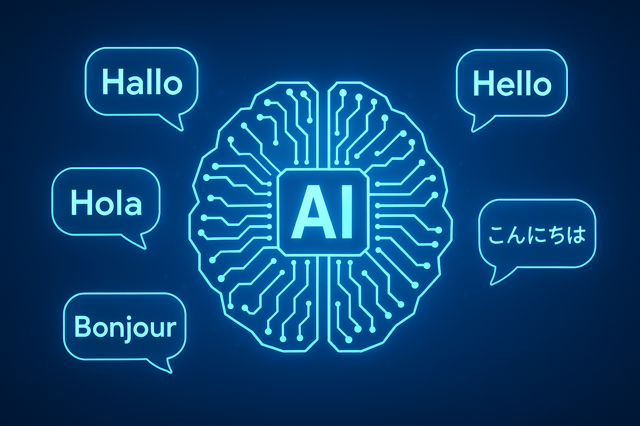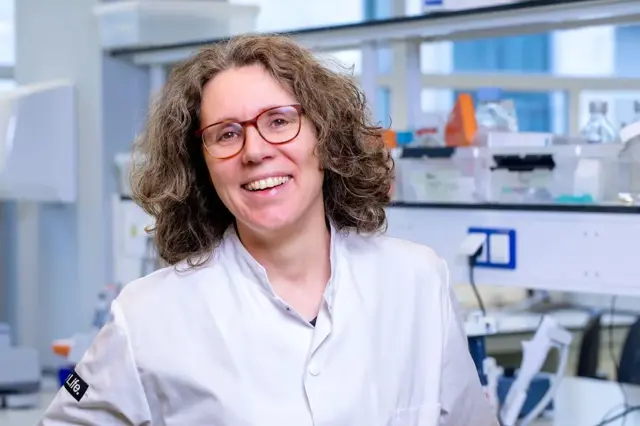< Back to news
'Students learn less rather than more'
ChatGPT is now widely used by her students. Bregje Cobussen is far from always aware of it, but often clearly recognises the difference from a self-created text. "ChatGPT generally produces texts that are written at a level the students cannot handle," she says.
It leads to laziness in the classroom, she observes. "Then when they have to complete assignments that have little control and are not graded, they just quickly go through ChatGPT. All I can do to keep an eye on that is to walk around and see what they have on their screens. But if I'm at the back left, I can't see what's happening at the front right."
It is searching for the balance between the advantages and disadvantages, says Cobussen. "So far, it is giving us a lot of extra work, while the students are learning less rather than more for the time being."
'You no longer have to go to Antarctica for a shoot'
De Vries was only introduced to AI-generated imagery in March, yet it has already fundamentally changed her work. She works mainly in advertising. "You no longer have to go to Antarctica to do a shoot in Antarctica," she says. Generative AI basically enables advanced cut-and-paste work that looks increasingly real.
In less than a year, she has seen the generated image become increasingly realistic. "There's now a way to give very realistic eyebrows to people, create a very realistic light or give a realistic texture to their skin."
'AI could halve workload in healthcare'
In this regard, Jacobs also sees a role for the technology behind tools such as ChatGPT. "That can be used to understand and summarise radiology reports. And we can use that in turn to further develop our systems."
He works in the radiology department, where AI is now being used to analyse chest radiographs. "You can think of it as the second reader, alongside the radiologist," he says. And that appears to be working properly. "There are several studies showing that its performance is comparable to that of a radiologist."
This article was published on NOS (in Dutch).


11 January 2024
How AI shook up education and took work out of healthcare last year
It is not that often that a technology turns entire professions upside down in a year, or actually shows the potential for the years to come. 2023 was the year when a lot of people started to see the power of artificial intelligence (AI).
In this NOS article, you can read about the experiences and expectations of three people who, each in their own way, had a lot to do with AI this year: a Dutch teacher, a photographer and a medical researcher.
'Students learn less rather than more'
The first time Dutch teacher Bregje Cobussen encountered ChatGPT during class was when a student from 4 havo had to write and recite an original opening of a speech. "And he started talking in language I had never heard coming out of his mouth before. I said: what does that word mean?" His telling reply: I don't know.
ChatGPT is now widely used by her students. Bregje Cobussen is far from always aware of it, but often clearly recognises the difference from a self-created text. "ChatGPT generally produces texts that are written at a level the students cannot handle," she says.
It leads to laziness in the classroom, she observes. "Then when they have to complete assignments that have little control and are not graded, they just quickly go through ChatGPT. All I can do to keep an eye on that is to walk around and see what they have on their screens. But if I'm at the back left, I can't see what's happening at the front right."
As a teacher, she does adjust the curriculum a bit during the year. "But with something like AI, of course, we didn't take into account." Besides, the testing is already fixed. "So I think the coming year will really be all about the fact that it's there and how we can use it to our own advantage."
It is searching for the balance between the advantages and disadvantages, says Cobussen. "So far, it is giving us a lot of extra work, while the students are learning less rather than more for the time being."
'You no longer have to go to Antarctica for a shoot'
Where for a Dutch teacher text is central, for Brenda de Vries it is images. For her, it is not ChatGPT that turns things upside down, but image generator Midjourney. "For me, it was like going back to the darkroom. You then put a picture in the chemistry that slowly comes up. With Midjourney, you get four pictures that also come up slowly."
De Vries was only introduced to AI-generated imagery in March, yet it has already fundamentally changed her work. She works mainly in advertising. "You no longer have to go to Antarctica to do a shoot in Antarctica," she says. Generative AI basically enables advanced cut-and-paste work that looks increasingly real.
She does stress that this is very different from journalistic or documentary work, where authenticity is important. Because, she says, in advertising photography, a lot was already modified and authenticity has not been so important for some time.
In less than a year, she has seen the generated image become increasingly realistic. "There's now a way to give very realistic eyebrows to people, create a very realistic light or give a realistic texture to their skin."
'AI could halve workload in healthcare'
Colin Jacobs, as a medical researcher at Nijmegen-based Radboudumc, works mainly with predictive AI. In other words, a system that predicts something.
"I look at abnormalities in the lungs and try to estimate the probability that what we see is actually lung cancer or, say, a scar or something else." And in that process, AI can help.
"I look at abnormalities in the lungs and try to estimate the probability that what we see is actually lung cancer or, say, a scar or something else." And in that process, AI can help.
In this regard, Jacobs also sees a role for the technology behind tools such as ChatGPT. "That can be used to understand and summarise radiology reports. And we can use that in turn to further develop our systems."
He works in the radiology department, where AI is now being used to analyse chest radiographs. "You can think of it as the second reader, alongside the radiologist," he says. And that appears to be working properly. "There are several studies showing that its performance is comparable to that of a radiologist."
Jacobs refers to a large research study in Sweden where one of the two radiologists was replaced by AI. "That study showed that cancer detection was just as proper and the workload was almost halved." That, then, is his great hope for the future: that AI will lower costs and bring down the workload in healthcare.
This article was published on NOS (in Dutch).
Vergelijkbaar >
Similar news items

September 9
Multilingual organizations risk inconsistent AI responses
AI systems do not always give the same answers across languages. Research from CWI and partners shows that Dutch multinationals may unknowingly face risks, from HR to customer service and strategic decision-making.
read more >

September 9
Making immunotherapy more effective with AI
Researchers at Sanquin have used an AI-based method to decode how immune cells regulate protein production. This breakthrough could strengthen immunotherapy and improve cancer treatments.
read more >

September 9
ERC Starting Grant for research on AI’s impact on labor markets and the welfare state
Political scientist Juliana Chueri (Vrije Universiteit Amsterdam) has received an ERC Starting Grant for her research into the political consequences of AI for labor markets and the welfare state.
read more >